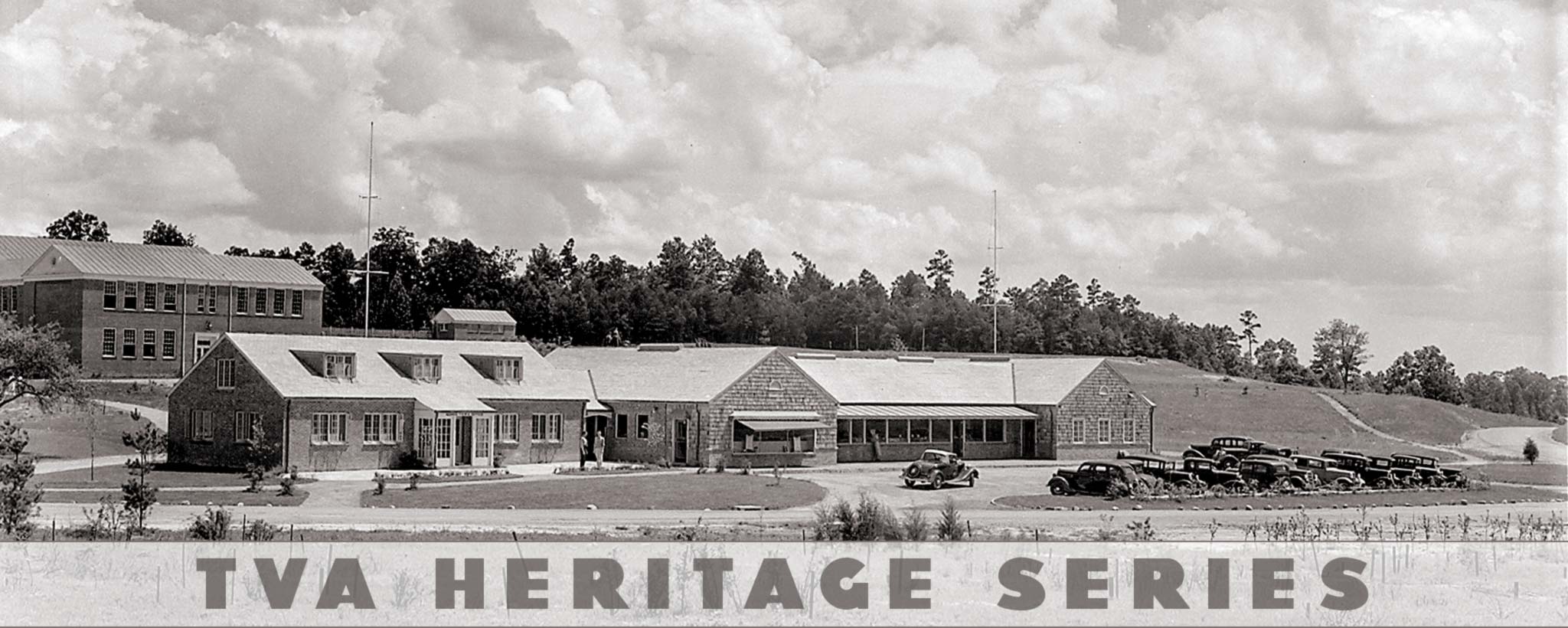
Norris: An American Ideal
New urban theorists are hard at work designing the towns of the future, which integrate residential, commercial and retail areas. But Norris, Tennessee—built by TVA over 80 years ago to house workers building the nearby dam—beat them all to the punch.
In recent years, communities across America have experimented with whole new ways of thinking about city planning. Urban-growth boundaries, meant to preserve the farmland and wilderness on a city’s fringes, are being approved. To keep themselves compact and efficient, some cities are beginning to mandate smaller yards, and the porch is making a surprising comeback.
New towns are designed from the ground up to be pedestrian-friendly and to foster a feeling of community. New Urbanists startle their elders with ideas about clustering commercial areas along with residential areas in pods to prevent sprawl along highway corridors.
But if you ask today’s most radical New Urbanist to draw up a picture of the ideal community of the future, don’t be surprised if he or she sketches something that looks very much like Norris, Tennessee. That’s the same Norris TVA planned and built back in 1933.
Brave New World
With the help of designer Earle Draper, TVA Chairman Arthur Morgan created a town that still seems forward-thinking today. In many ways Norris, set in the Tennessee hills 20 miles north of Knoxville, is the embodiment of these brave new ideals.
The immediate purpose of the town was to house the workers building Norris Dam four miles away on the Clinch River. The second purpose, which may have been even more important to Morgan, was to show America that cooperative living works.
The houses would be built on a modest and tasteful scale, with an eye to community as much as comfort. In design, they would balance the traditions of the Tennessee Valley (building materials of natural stone and native cedar, and a porch on every house) with modern conveniences. In this rural region—which in 1933 was less than 10 percent electrified—Norris would be fully electric, with ceiling heat and refrigerators in every home.
And it would be completely walkable. The people of Norris would be able to visit their neighbors, mail a package, fill a prescription, do some light grocery shopping and meet the kids at school—all without getting into a car. The town would be surrounded by a buffer zone of protected, undeveloped forest that would keep the ugly outside world at bay.
Drive into Norris on a spring afternoon. There’s not much traffic to obey the 20-mile-an-hour speed limit. Most of the houses, with their natural chimneys and cedar shingles, blend into the forest. Many don’t face the street directly, but turn toward one another, as if in conversation. Between them, paths take off through the woods in different directions. It seems almost like a summer camp.
Strangest of all, the commercial area doesn’t look commercial. There are no billboards in Norris. There’s a filling station, but you can’t tell until you look closely that it’s a gas station.
Living History
“To see Norris, you really have to walk Norris,” says TVA historian Pat Ezzell. “And it is such a nice place to walk.”
Do so, and you’ll see many of the original TVA buildings, which still stand in town—including the hospital (now a private residence), the workers’ cafeteria, where TVA workers in the 1930s could eat a full meal for just a quarter, and the old worker’s dormitory across the lane, now used for Methodist Sunday-school classes.
A meandering few blocks away is one of the largest buildings in Norris, two stories plus a capacious attic. Still in use by TVA’s engineering department, it was originally the ceramics lab. It represents one of the more poignant stories connected with Norris’s founding. Arthur Morgan dreamed that the town would live on long after work on Norris Dam had ended. His idea was to use native materials and skills to start a ceramics industry, which would sustain Norris after the dam was finished. It never worked out as he hoped. (Read more about that in an upcoming TVA Heritage article.)
Nearby, old Norris High is still there. It’s now a busy middle school facing the old Commons in the center of town. This big Georgian-style brick building was once the largest electrically heated structure in the entire world
Ironically, the home of Arthur Morgan, who planned the town as an egalitarian haven, is different from any of the others. Located on East Circle near the town center, it’s much larger, and it stands so far from the road that you can only catch glimpses of its blue-gray siding between the trees. Morgan may have justified the size and privacy of his abode with the fact that he and his wife, Lucy, were occasionally called upon to entertain Eleanor Roosevelt as a houseguest.
An American Ideal
Some things have changed in Norris. TVA gave up control of the city in 1948, when the government auctioned it off; a Philadelphia consortium bought Norris for just over $2 million and sold it in pieces, mainly to residents. If it’s still idyllic nearly 70 years later, that may be a testament to its near-perfect design—and to the will of the people who choose to live here.
Norris is primarily a bedroom community for Knoxville, Oak Ridge and other pragmatic cities. Many of its residents aren’t proletarian factory workers, but retirees and young parents who want their kids to grow up in a community where the crime rate is very nearly zero.
But even after a nearly 80-year absence, Arthur Morgan, the utopian dreamer, would know his way around. Today, as many cities construct bike paths and consider urban-growth boundaries, America seems to be moving slowly in the direction Norris, and TVA, pioneered in 1933. Norris may not be the self-sustaining model city that Arthur Morgan envisioned back then—but somehow it’s still an American ideal.